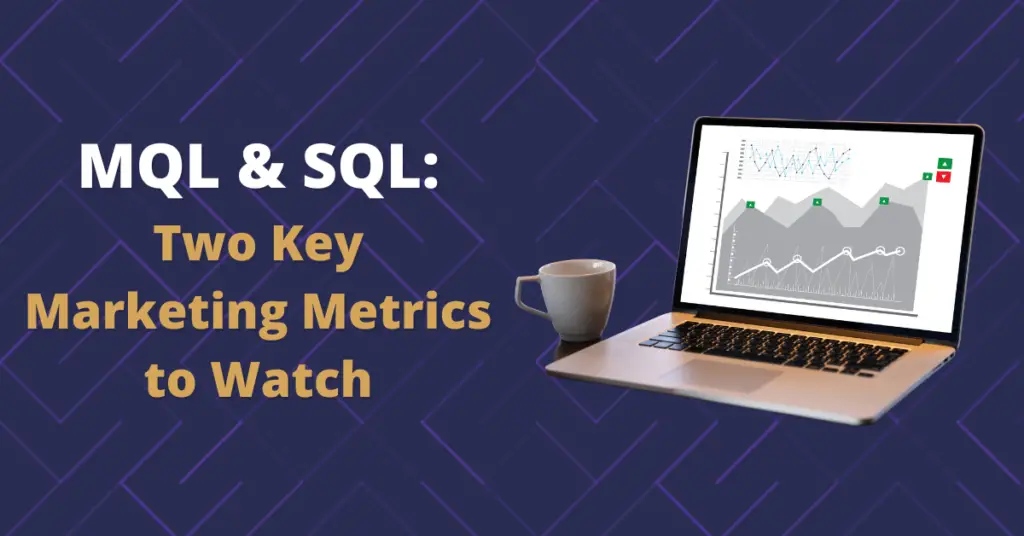
Concrete data in the form of key performance indicators, or KPIs, is compelling evidence that your marketing team’s efforts are getting results. While it may seem like a daunting task to find the right KPIs to prove this, it’s far from impossible.
Today, we’ll look closer at two basic marketing KPIs your company should be tracking and what each means.
Marketing Qualified Lead (MQL) Conversion Rate
Delivering a thousand MQLs sounds fantastic, but not if the conversion rate is very low. When it comes to MQLs, quality trumps quantity.
While you still might set a goal for the number of MQLs that marketing creates, the focus should be on creating quality MQLs. You can determine whether you are delivering quality leads by measuring the number of leads against a conversion percentage goal.
What the MQL Conversion Rate Tells You
A low conversion rate tells you that you first should look at your MQL definition and whether your lead scoring program is set up to deliver leads that fit that definition. You may have too many requirements that an otherwise qualified lead won’t match, driving your numbers down. Too few requirements and MQL quality declines, which causes sales to spend valuable time sifting through them.
Second, take a look at your nurture foundation. Is it truly engaging your audience, at their pace? You may need to rework some marketing plans.
Finally, how quickly does your sales team follow up? Warm leads can get cold pretty quickly. You’ll also want to know how many leads turn cold and why.
A good conversion rate tells you that your efforts are working. Unfortunately, it won’t tell you which efforts. To find this out, sort the MQLs by lead source and calculate the conversion rate for each source. This will show you which sources consistently convert more than others, and what parts of your marketing strategy need to improve.
Tracking Your MQL Conversion Rate
Once you pass an MQL on to sales, keep tracking it. Note how quickly the lead is accepted, and if it was rejected, why it was. If your workflows are already set up to track lifecycle stages, then you’re good to go. If not, setting this up should be your top priority.
Next, track the actions that the sales team can take. Generally, this is a field on the lead record in the CRM that gives the sales team the option to accept or reject the lead. From this information, you can easily generate a report to calculate your overall MQL conversion rate expressed as a percentage.

Sales Qualified Lead (SQL) Conversion Rate
The SQL conversion rate measures how often a lead converts from an accepted lead into a sales-qualified lead. At this point, the sales team has created an opportunity for conversion. This metric is arguably even more important to track than the MQL conversion rate.
What the SQL Conversion Rate Tells You
By tracking the leads that make it from acceptance to the SQL stage, your marketing team can pinpoint the campaigns and content making an impact. This lets you identify high-value content. Better yet, you can turn this newly identified high-value content into multiple marketing messages, especially for the early stages of exposure where persistence is key.
If the conversion rate is abnormally low, it’s time to initiate a conversation with sales to learn why. It could be the qualification rules are incorrect, or you need additional nurture activities to better qualify for sales-ready leads.
Tracking Your SQL Conversion Rate
This essentially requires the same setup as your MQL conversion rate. In addition to tracking MQLs, ensure you’re also tracking the lifecycle stage and can update the stage as necessary.
Sales should still be able to reject an acceptable lead, as they might an MQL. However, at this stage, the acceptance can be automated. An SQL needs to be associated with an opportunity. This allows your marketing automation platform workflow to change the lifecycle stage to SQL when the contact is added to an opportunity. The final report generated will be the same as the MQL conversion report, with the added choice to filter on accepted leads or SQL stages.
This is an excerpt from our eBook: “Building KPIs That Matter: A Tried-and-True Guide for Marketers”. Download and read the full eBook for free here.





